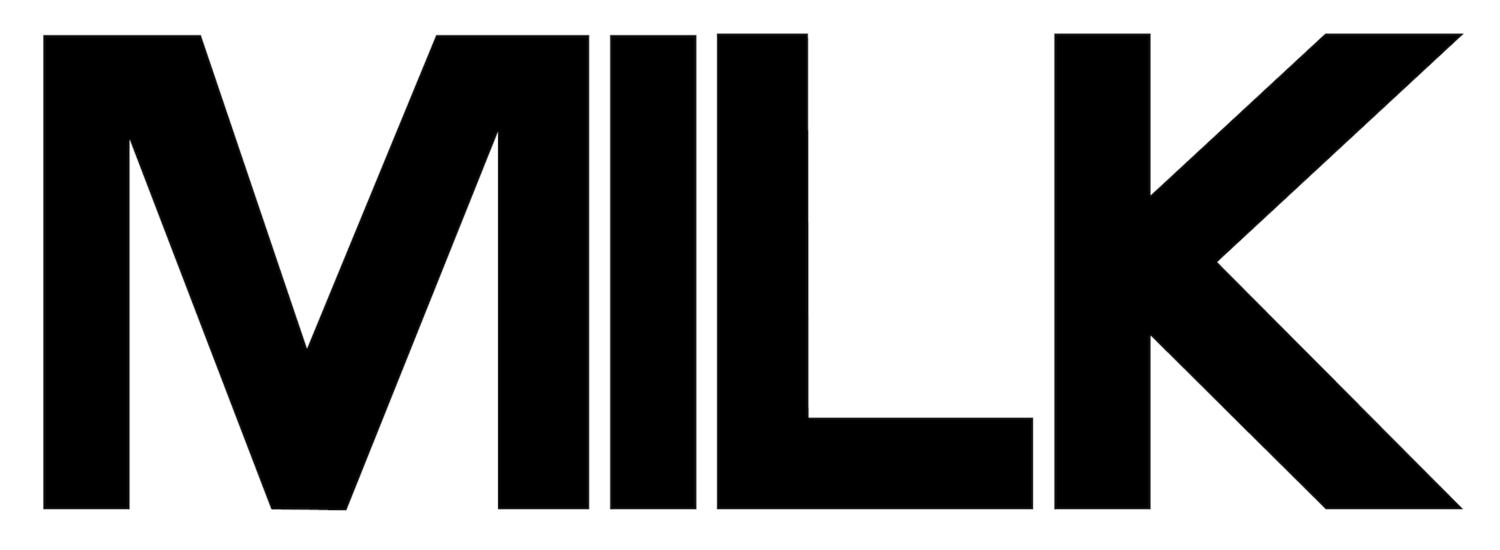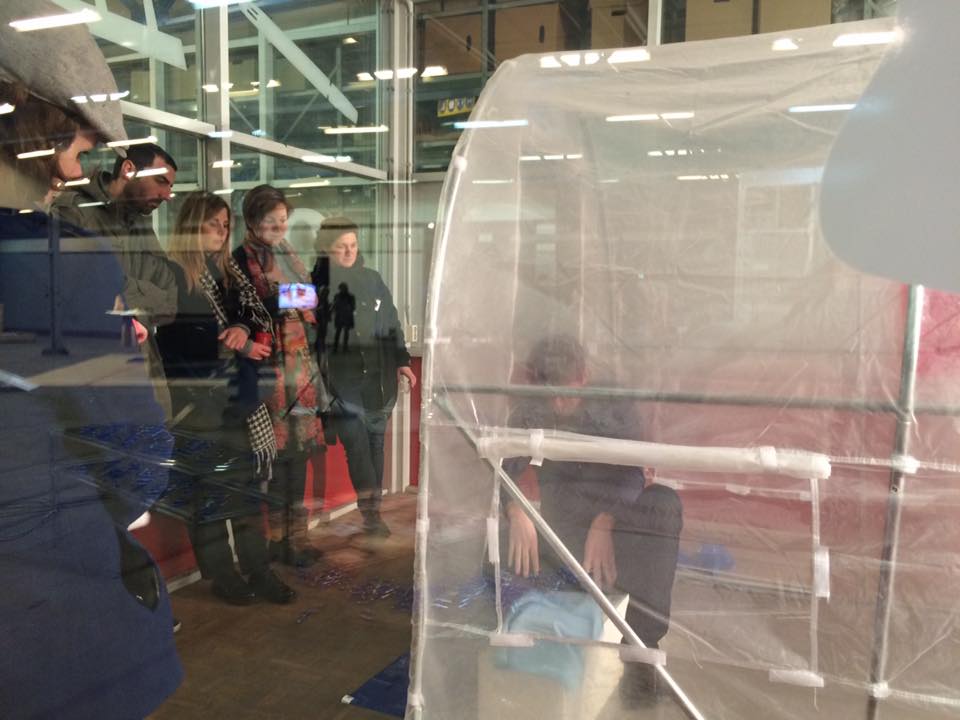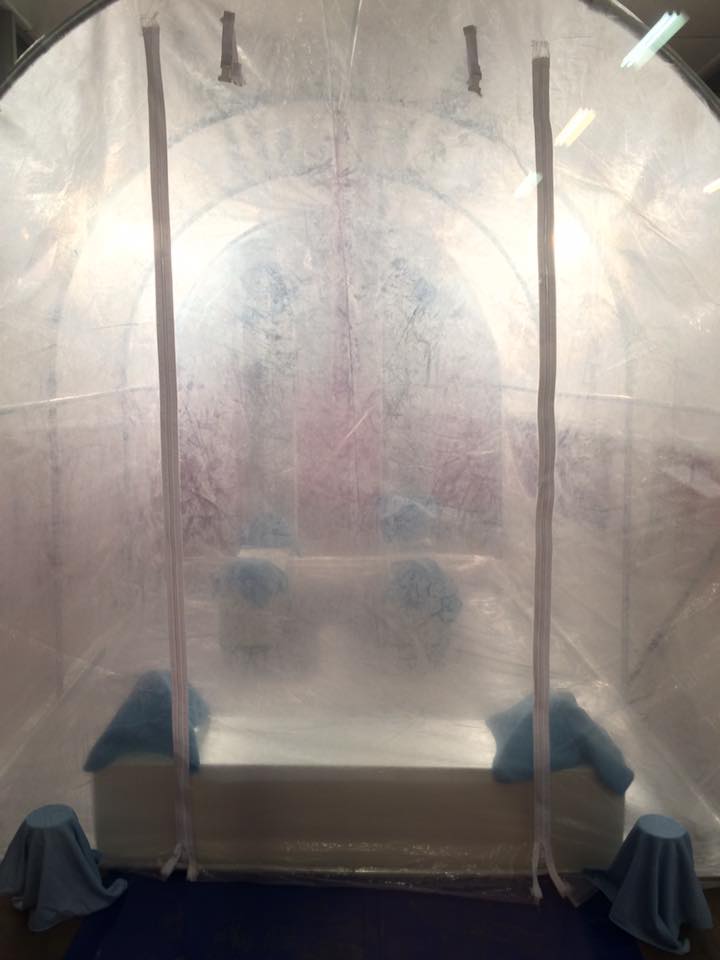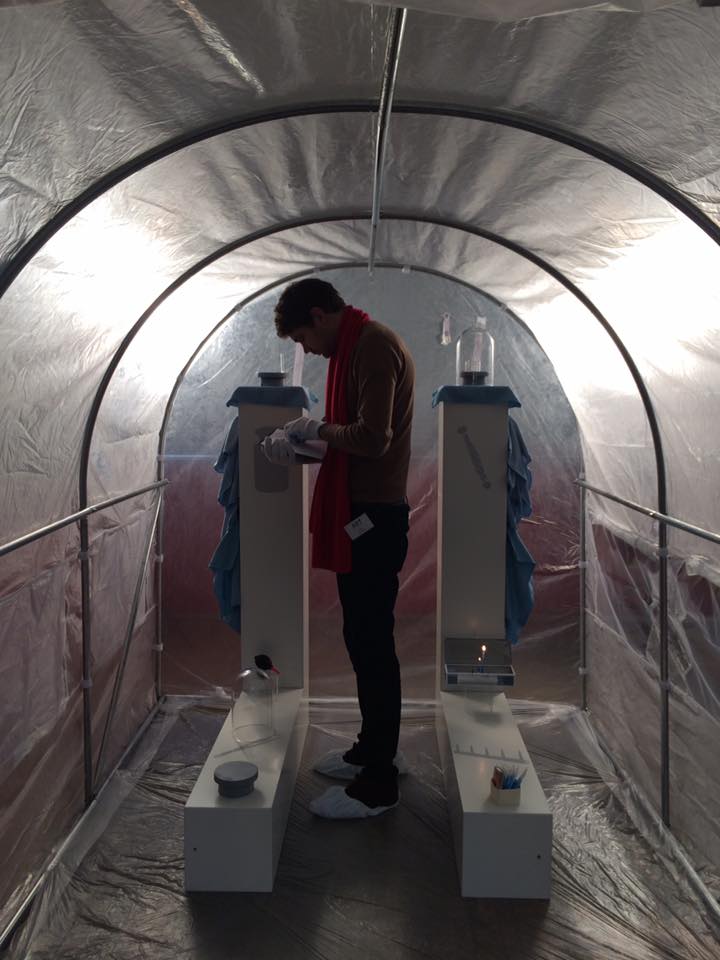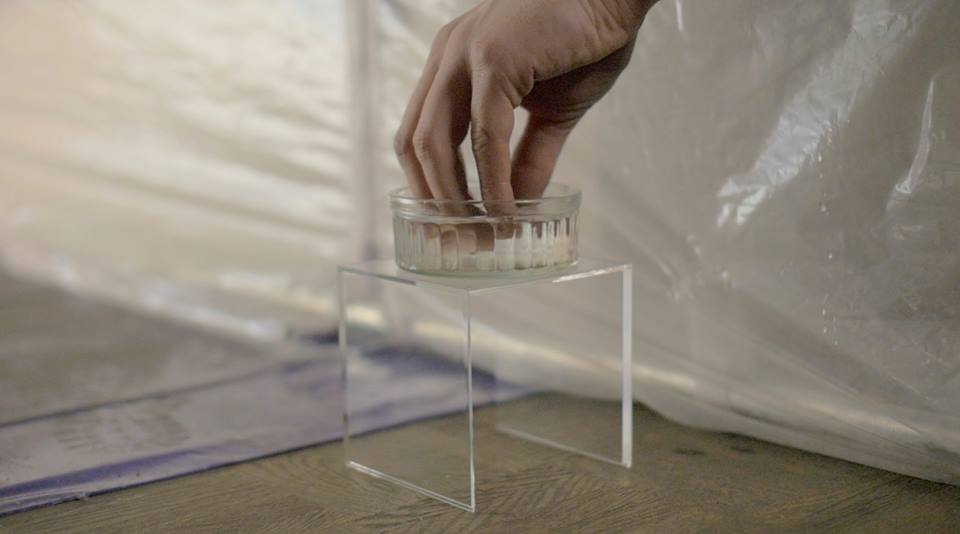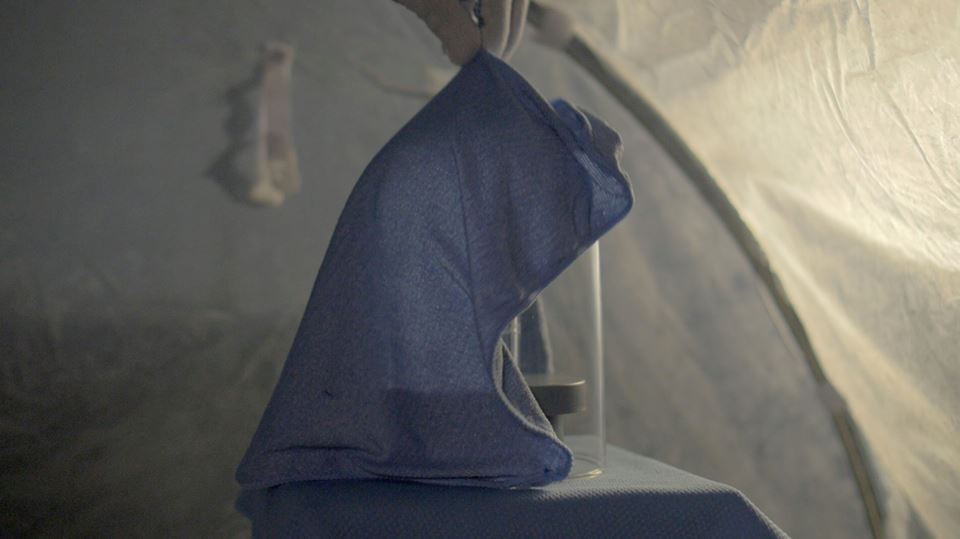INTERSECTIONS
Installation and performances Pavel van Houten
Ann Demeester wrote about his work at the Frans Hals Museum (2015): “Van Houten is interested in the ways we try to make the world meaningful. In addition, he makes no distinction between geometry and mysticism, poetry or hard science. He studies the world around us, inventories, documenting and measuring different phenomena with precision and attention of a monk or microbiologist.”
At Art Rotterdam - Intersections Pavel van Houten brought the similarity Demeester calls ‘between monk and microbiologist’ more directly together by literally combining religion and science. Both are meticulously working to unravel the great mysteries of the world; by months puzzling on an icon or by weighing cobwebs on Texel. By engaging they managed to connect with the world around them.
In 1889 the first International Prototype of the Kilogram (IPK) was created. This piece of metal - with the size of a chicken egg – is the basis of all kilos in the world. If a grain of dust of 1 gram falls on this all other kilos in the world, from pack of sugar to bar of gold, will lose 0,1% of its value. The artefact can be found in France (Sèvres), heavily guarded under three cloches, sealed with three locks, kept by three different people who all hold an unique key. Only if these three people come together they can open the safe of glass. The IPK has six sisters who have 68 copies spread over the world. Number 53 can be found in the Van Swinten Laboratory in Delft, The Netherlands. Once in the 50 years the IPK is intensively washed and securely weighed.
The cult that has arisen around the IPK's reminds Van Houten of the Marienschrein (cloth of Mary) in the cathedral of Aachen. This relic is shown only once in seven years. The rituals around the IPK (wash, protection, display) have a religious overtone. The IPK on its own is as useless as the cloth; only what it represents has worth. The IPK is an anchor of abstract (scientific) values in the physical world, as a Catholic relic anchors the divine on earth.
In the 15th century Claes Scoutet, a Bruges civilian from Dordrecht donated a piece of the Holy Cross to the Grote Kerk. The adoration of this relic grew when it was found unharmed after the city fire of 29 June 1457. This was the beginning of a long line of miracles. A ‘miracle book’ mentions 175. At this moment the relic can be found in the St Antonius Church in Dordrecht. Each year a procession is organised at the 29th of June.
In January 2017 Van Houten visited the relic of the St Antonius Church and the IPK in Delft. He spoke with the people who handle the objects, touch, wash, care for them. Van Houten investigated the rituals and the proceedings around these objects and compared them with each other; looking for differences and similarities. He is curious what actions and instruments are used; in which setting and under what conditions. Following this analysis Van Houten mixed the rituals and developed his own ritual. This was shown in an installation during Art Rotterdam, with a strange but also coherent combination between duster and plastic gloves; between chemicals and holy water.
Van Houten performed the ritual several times. Between these performances the setting was an installation which appeals to the imagination.
www.artrotterdam.com
